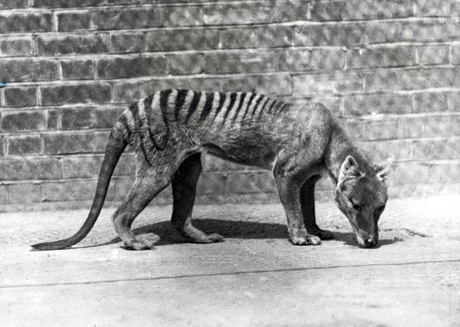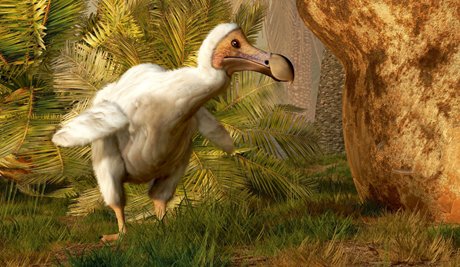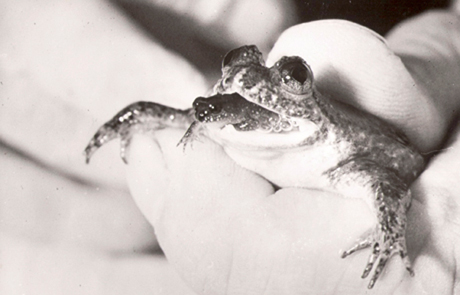One single cell. That could be all we need to revive a mammoth. Over the last decade, scientists have been part of a veritable revolution of DNA decoding and sequencing, and soon, they may only need one cell to revive any animal which became extinct during the past 30,000 years.
or too many of the world’s most iconic animals, top predators, and Ice Age behemoths, there’s only one place you can see them – in a museum. Some displays feature stuffed corpses, others mere wax models. It’s a tragedy.
Our world has lost thousands of species to natural extinction events and human activity alike. But what if we could bring some of those animals back to life with genetic technology and cloning? Should we undo the mistakes of the past? One thing’s for sure: we are on the cusp of a technologyical revolution that will turn this once-academic question into a real challenge for our future.
Resurrecting the mammoth, the sabre-tooth tiger, the dodo and the thylacine: it’s no longer a question of if, but when.
Ibex Resurrects
This debate gained new traction in 2003, when scientists managed to revive the Pyrenean ibex. One of four mountain goat species, the big, agile animal weighed 100+ kg and featured long, beautifully curved horns.
In the 1800s, the horns made the animal a major target for hunters, and the population shrank fast. In 1892, its close relative the wild Portuguese ibex went extinct. After that, humans realised the animals needed protection, but it was too late. The last Pyrenean ibex, Celia, died in January 2000. Immediate cause of death was being crushed by a falling tree… but really, her species was killed by hunting and loss of habitat.
A team of scientists headed by Biology Professor Jose Folch started an extraordinary project in 1989. Several years before cloning hit the world stage in 1996 (thanks to Dolly the sheep), the Spanish scientists set out to save the Pyrenean ibex.
They took DNA samples from some of the remaining individuals, and when Celia died, her cells too were added to the freezer.
The scientists studied the ibex’ physiology and discovered that a cross-breed between an ordinary goat and an ibex was an excellent surrogate mother. The scientists transferred cell nuclei with the genetic material of Celia the ibex to empty egg cells from a goat, implanting the cells into 57 surrogate mothers. Seven became pregnant, but only one completed the pregnancy. In 2003, she gave birth to a 2.6 kg Celia clone, but the lungs of the young goat were non-functional, and it died only seven minutes after its birth.
Bigger toolbox
Since 2003, cloning technology has developed quickly. Today, cloning is an integral part of the toolbox, and scientists can readily convert skin cells into egg cells, which can be artificially fertilised. Along with improved DNA tech, cloning has opened up brand new opportunities.
At the most fundamental level, all animals have the same DNA – it only differs in the precise genes that make an embryo develop into a sabre-tooth cat instead of a squirrel. The DNA, which instructs cells to divide and grow into a complete individual, is the same in all living creatures.
Some animals – like the horse and the donkey – look very similar because they have fewer differences in their DNA. In fact horses and donkeys are so similar they can breed to produce mules. This is the principle that geneticists are hoping to use to resurrect extinct species.
Interbreeding living horse-like animals is one thing, but if the desired species is already extinct, the task is much more difficult.
Still, If a scientist commands the fully sequenced DNA of an animal species, he has, in principle, a complete manual of how to revive the animal.
But the trick is getting that unbroken strand of DNA, Though it is a very stable molecule, DNA has a limited life span. Dinosaur DNA, the youngest of which is 65 million years old, has degraded too far to be useful. But Ice Age animals such as sabretooths and mammoths, which lived up until 12,000 years ago, stand a real chance of returning from the dead.
A new future in ancient blood
Resurrecting a mammoth is no longer a theoretical possibility – it is a project which scientists are already working on.
Earlier this year, a Russian expedition headed by Professor Semyon Grigoryev of the North-Eastern Federal University in Yakutsk announced from Siberia the sensational discovery of blood and muscles in a 12-15,000-year-old, frozen mammoth. Scientists have dreamt of such a find since last year, when they entered into cooperation with colleagues of the Sooam Biotech Research Foundation in Seoul. The body is so well-preserved that the tissue may contain the coveted intact cells or cell nuclei, which are necessary to revive a mammoth by means of cloning.
A few years ago, Japanese scientists found intact nuclei in the cells of mice, which had been placed in the lab’s freezer for 16 years at a temperature of -20 °C. Professor Sayaka Wakayama from the RIKEN research institute in Kobe, who headed the research, transferred the nuclei to emptied mouse egg cells and managed to clone a female mouse, which had offspring. Though 16 years is much less than 12,000, the experiment demonstrated that a frozen body could preserve intact cell nuclei, which may eventually be used to revive the mammoth.
Passenger pigeon revived
DNA is also the decisive factor of a revival project, which is to bring the passenger pigeon back to life. In the early 1800s, billions of passenger pigeons existed in America, but over a period of 100 years, hunting and forest felling wiped out the bird. The last wild passenger pigeon was shot in 1900, and only 14 years later, the last passenger pigeon died in the Cincinnati Zoo. Several museums have stuffed passenger pigeons, but none in which scientists can find an intact cell nucleus.
Scientists headed by biologist Ben Novak from the University of California have had to figure out an alternative strategy involving the passenger pigeon’s closest relative, the band-tailed pigeon. Gene by gene, the scientists intend to edit the band-tailed pigeon’s genetic code until it has been converted into a passenger pigeon genome. A few specific changes will provide the bird with its special features like a red eye and a longer tail.
For the project to succeed, the scientists need to invent a new cloning technique, as birds cannot be cloned in the ordinary manner. Cloning requires scientists to remove the nucleus of the egg cell, but in birds, the egg is a cell, and though it seems easy to remove the nucleus, it cannot be done without ruining the eggshell and the nucleus.
At the Roslin Institute in Scotland, biochemist Michael McGrew has invented an alternative method. Instead of inserting the manipulated genome into an egg cell, he inserts it into stem cells, turning them into gametes, which are inserted into the ovaries of a band-tailed pigeon. Thus, he designed a bird with the sex organs of another species. The bird’s offspring will have offspring with the characteristics of both bird species. Consequently, scientists will revive the passenger pigeon by repeating the process and selecting characteristics, until they have a passenger pigeon. Finally, the scientists will teach the pigeons their natural behaviour by means of trained messenger pigeons, among others.
In principle, the method can be used with many species. For instance, the mammoth could be revived by converting an elephant genome, if scientists do not find an intact, frozen cell nucleus.
Australian frog the first to return
The next revived animal will probably be neither the mammoth, nor the passenger pigeon, but an Australian frog, which was discovered in 1972, only to become extinct in the 1980s.
The gastric-brooding frog, has both a northern and a southern species. The female swallows the eggs, once the male has fertilised them, converting its stomach from an acid bath into a nourishing, protective “womb”. Biologists do not know precisely how the frog does this, but if they find out, doctors may discover new ways of controlling digestion and the release of gastric juice.
The revival project is headed by Professor Michael Archer of the University of New South Wales, Sydney. The scientists had intact cells from frogs, which were frozen 30+ years ago, and have already cloned the first embryos, and important first stage before tadpole.
It seems likely that the gastric-brooding frogs were wiped out by a fungal disease introduced by modern humans. The fungus still exists, and so it’s not known for certain if the frogs can ever return to the wild. The same is true for lots of other species such as the baiji- the Yangtse River Dolphin – whose habitat was ruined by pollution.
Tehcnically, it is not unlikely that we will once again feel the ground shake due to large mammoth herds and watch huge groups of passenger pigeons fly. Perhaps we even have a moral obligation. Humans have caused irrepairable damage to nature. We polluted waterways, cleared forests, and over-exploited animals. But thanks to our technology, we might soon be able to turn back time and revive some of the animal species which we wiped out.












